
Nice task that challenge students to think about and represent factions.
- Subject:
- Mathematics
- Material Type:
- Assessment Item
- Formative Assessment
- Learning Task
- Provider:
- Illustrative Mathematics
- Date Added:
- 11/14/2016

Nice task that challenge students to think about and represent factions.

This task provides a context for performing division of a whole number by a unit fraction. This problem is a "How many groups?'' example of division.
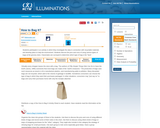
In this recycling activity students conduct a poll and display data showing which type of material the survey population feels is the best for shopping bags. Students share their results in a data display of their choice and then use the data to draw conclusions and create a recycling plan. The activity includes the student worksheet, extension suggestions, and related resources.
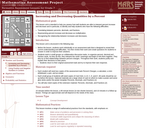
This lesson unit is intended to help teachers assess how well students are able to interpret percent increase and decrease, and in particular, to identify and help students who have the following difficulties: translating between percents, decimals, and fractions; representing percent increase and decrease as multiplication; and recognizing the relationship between increases and decreases.

This lesson builds on students understanding of partitioning and introduces the concept to of fractions as a number that can be represented on a number line. Lesson provides students multiple opportunities to identify the unit fraction.
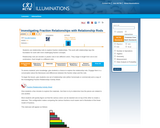
In this lesson plan from Illuminations, students use relationship rods to explore fraction relationships. Relationship rods range in length from one to ten centimeters, and each rod is a different color. An activity sheet with solutions, questions for students, assessment options, and suggested extension activities are included. The lesson plan is part of a five lesson plan unit, Fun with Fractions, which is cataloged separately.
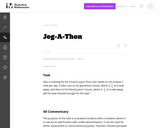
The purpose of this task is to present students with a situation where it is natural to add fraction with unlike denominators; it can be used for either assessment or instructional purposes.
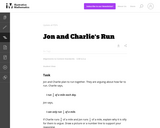
The purpose of this task is to present students with a context where they need to explain why two simple fractions are equivalent.

This is a challenging fraction comparison problem. The fractions for this task have been carefully chosen to encourage and reward different methods of comparison.
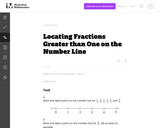
This task requires students to represent fractions on a number line.
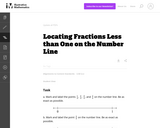
In this number line task students must treat the interval from 0 to 1 as a whole, partition the whole into the appropriate number of equal sized parts, and then locate the fraction(s).
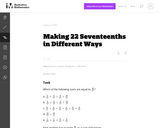
This task is a straightforward task related to adding fractions with the same denominator. The main purpose is to emphasize that there are many ways to decompose a fraction as a sum of fractions, similar to decompositions of whole numbers that students should have seen in earlier grades.

This tasks lends itself very well to multiple solution methods. Students may learn a lot by comparing different methods. Students who are already comfortable with fraction multiplication can go straight to the numeric solutions given below. Students who are still unsure of the meanings of these operations can draw pictures or diagrams.

The purpose of this instructional task is to motivate a discussion about adding fractions and the meaning of the common denominator. The different parts of the task have students moving back and forth between the abstract representation of the fractions and the meaning of the fractions in the context.

This collection of five lessons explores 3rd grade mathematical concepts in the context of the outdoor classroom. These lessons span various math and science curricular units and include:Arrays in Nature (modeling multiplication)Measurement in Nature (length/mass and traits of organisms)Fraction Snow Cakes (fractions)Engineering and Design - Flight (measurement/data and forces)BioBlitzes (measurement/data, diversity and traits)
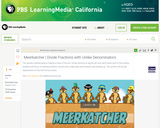
In this activity, students will focus on dividing fractions, starting with single-digit denominators and working up.
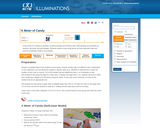
In this series of three hands-on activities, students develop an understanding of the relationship between fractions, decimals, and percents based upon models of hundredths. Each activity requires students to display their one hundred pieces of candy in a different way: linear model, grid model (rectangular area), and region model (circle graph/pie chart). This lesson includes student worksheets, assessment questions, extension suggestions, and a link to a circle graph tool.
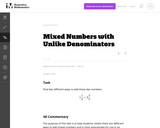
The purpose of this task is to help students realize there are different ways to add mixed numbers and is most appropriate for use in an instructional setting.
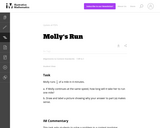
This task asks students to solve a problem in a context involving constant speed. This task provides a transition from working with ratios involving whole numbers to ratios involving fractions.

This task is designed to help students focus on the whole that a fraction refers to. It helps students to realize that two different fractions can describe the same situation depending on what you choose to be the whole.